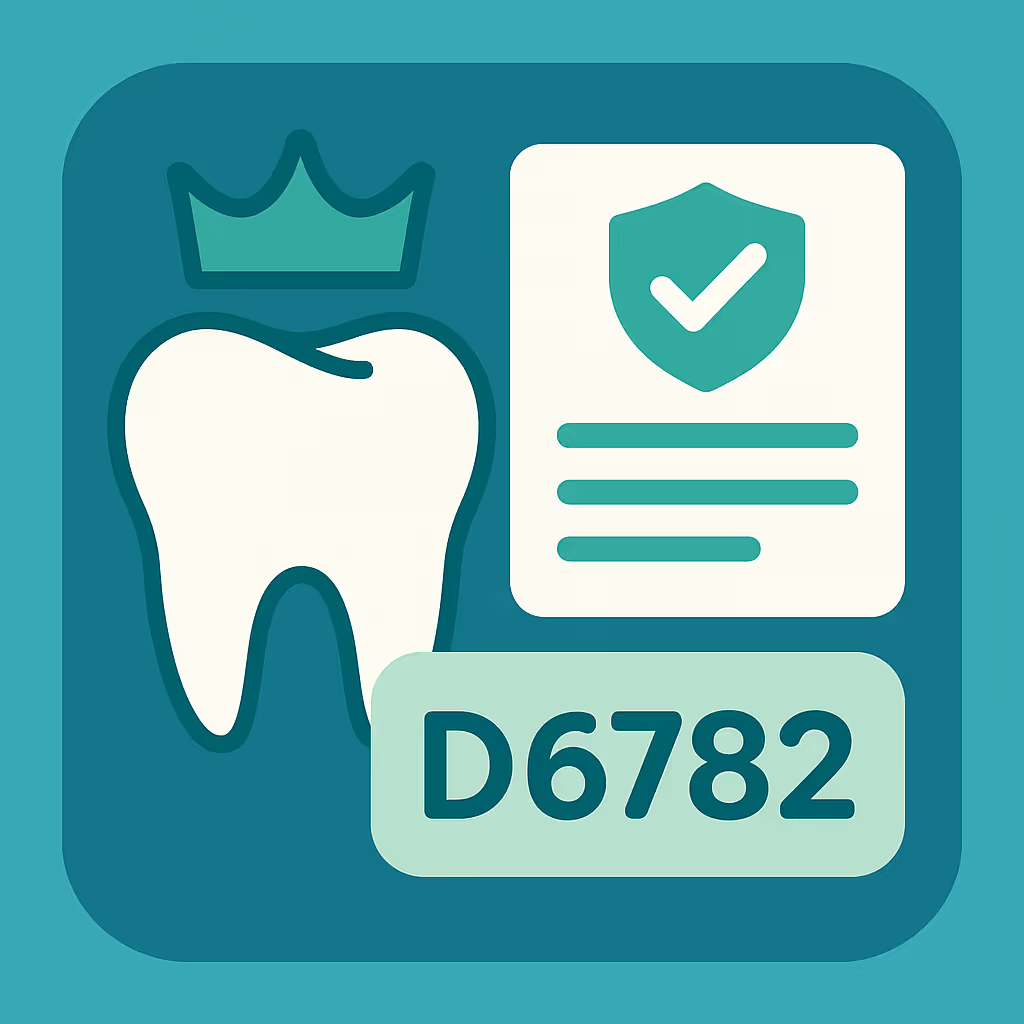Understanding Dental Code D2950
When to Use D2950 dental code
The D2950 dental code is used for a core buildup, including any pins when required, as part of the restorative process for a tooth that has suffered significant loss of structure. This CDT code is appropriate when a tooth requires additional support to retain a crown due to extensive decay, fracture, or previous restorations. It is not used for routine fillings or as a substitute for a crown itself. Instead, D2950 should be reported when the remaining tooth structure is insufficient to support a crown without additional buildup material, and the procedure is performed on a vital or endodontically treated tooth.
Documentation and Clinical Scenarios
Proper documentation is crucial for successful reimbursement of D2950. Dental teams should include detailed clinical notes describing:
- The extent of tooth structure loss (e.g., “more than half of coronal tooth structure missing”)
- The necessity of a core buildup to support the planned crown
- Materials used (e.g., composite, amalgam, or glass ionomer)
- If pins are used, note their placement and rationale
Common clinical scenarios include teeth with large carious lesions, fractured cusps, or after endodontic therapy where the remaining tooth structure is insufficient for crown retention. Photographs, radiographs, and pre-operative images can further substantiate the need for D2950 in the patient record and with insurance claims.
Insurance Billing Tips
Billing for D2950 requires attention to payer-specific policies and thorough documentation. Here are best practices:
- Verify coverage: Check the patient’s dental benefits to confirm if core buildups are covered, and whether limitations apply (e.g., frequency, tooth type, or required pre-authorization).
- Submit supporting documentation: Always include clinical notes, radiographs, and intraoral images with the claim. This reduces the risk of denials and expedites claim processing.
- Differentiate from other codes: Do not confuse D2950 with D2949 (restorative foundation for an indirect restoration) or D2954 (prefabricated post and core in addition to crown). Use D2950 only when a core buildup is performed without a post.
- Appeal denials: If a claim is denied, review the Explanation of Benefits (EOB) for the reason, gather additional documentation if needed, and submit a clear, concise appeal letter referencing the clinical necessity and CDT code definition.
Example Case for D2950
Consider a patient presenting with a molar that has undergone root canal therapy. The tooth has lost significant structure due to decay and previous restorations, leaving only the lingual and buccal walls intact. The dentist determines a crown is necessary for long-term prognosis, but the remaining tooth structure is insufficient for crown retention. A core buildup (D2950) is performed using composite material to restore the missing structure, and no post is placed. The procedure is documented with pre- and post-operative photos, radiographs, and detailed clinical notes. The claim is submitted with all supporting evidence, and the insurance carrier approves the benefit based on the clear demonstration of medical necessity.
By following these guidelines, dental teams can ensure accurate billing, minimize claim denials, and support optimal patient care when using the D2950 dental code.





